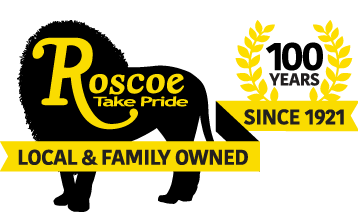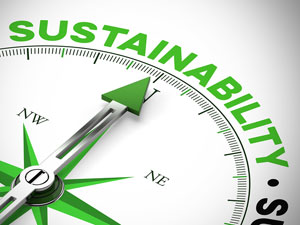Our industry is one of the original sustainable industries. Work uniform and textile re-using vs. disposing goes back to the turn of the 20th Century, and back when we were founded in 1921.
Sustainability Origins
Sustainability was initially driven out of scarcity more so than a desire to take care of the environment. However, the textile rental industry has evolved, sustainability has replaced scarcity with a desire to protect the environment, treat byproducts and reduce costs. By comparison, if all work uniforms were cleaned in your home washer and dryer, you would use many times the water and detergent. Your garments wouldn’t be nearly as clean and you would expose your home to high levels of contaminants.
Shop Towel Rule
For the last 20 years, the EPA has been wrangling on the Shop Towel Rule and it has finally been enacted. I even testified in front of a congressional panel a few years ago, discussing the benefits of reusable shop towels and print towels vs. disposables. Our industry association, TRSA, has really pushed for the idea that the textile rental industry will not condone filling landfill with contaminated disposables but will instead utilize greener options.
Because we’re regulated by local pre-treatment operators, the fact we put in first wastewater treatment system in world in 1970s, this effort goes towards our industry operating under sustainability best practices. In fact, we’ve adhered to recently required sustainability practices for the last 50 years. We’ve also recently implemented reusable nylon mesh bags for all textiles and, like soiled shop and print towels, they are transported in sealed containers.
LED Lighting
This year, we retrofitted our fluorescent lighting system with LEDs. LED lighting uses less than 25% of energy of the old lighting system and have a lifetime of 12-15 years, compared with a year or two for fluorescents. Using LEDs reduces landfill, conserves energy, cuts costs, and keeps with our aim of being more sustainable.
Sludge Filter Press Implementation
We also put in a sludge filter press this year. The byproduct of washing work uniforms, floor mats, shop towels, etc. is a sludge that is non-hazardous except for some petrochemical content from the auto industry we serve. Every year, we generate 60,000 gallons of liquid sludge. Because 85% is water, we previously had to bring in a pumper truck every two weeks to pump a load of water out, which would then go to a facility for further treatment and ultimately be deposited into a landfill. With our new system, we inject the sludge into a filter press. After four hours, all the water is squeezed out and goes back into our treatment system to be treated once again. The sludge is extracted into a solid cake that can be disposed of in a lined landfill. As a result, we’ve reduced our waste stream significantly from 60,000 gallons to 100 cubic yards of sludge cake per year.
Sustainability Going Forward
In addition to the sustainability initiatives described above, we also recycle hangers and consolidated two facilities into a single plant in 2009 that reduces water consumption by six million gallons of water, natural gas usage by 25% and electrical consumption by 15% annually. In 2016, our 95th year, we will continue to explore and implement further sustainability best practices. More to come…
Contact us to learn more about work uniform, floor mat and shop towel laundering best practices

